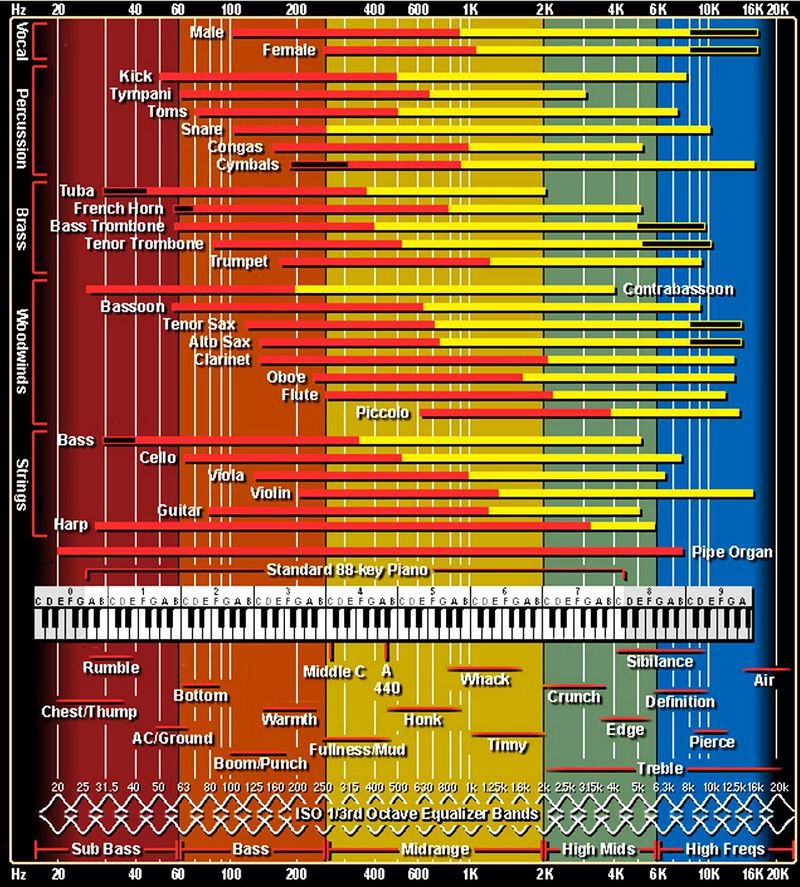This is the wiki for products made by Fractal Audio Systems, maintained by members of the community.
Difference between revisions of "Describing sound"
Jump to navigation
Jump to search
(added SOS chart - used with permission) |
|||
| (12 intermediate revisions by the same user not shown) | |||
| Line 1: | Line 1: | ||
When communicating, a common nomenclature for describing sound can be beneficial. It ensures we're all talking about the same thing. When you say <q>honk</q> and I say <q>honk</q>: if we're not both talking about the frequencies that occur between 400 and 1000 Hz on the audio spectrum, we're going to have a hard time communicating. | When communicating, a common nomenclature for describing sound can be beneficial. It ensures we're all talking about the same thing. When you say <q>honk</q> and I say <q>honk</q>: if we're not both talking about the frequencies that occur between 400 and 1000 Hz on the audio spectrum, we're going to have a hard time communicating. | ||
| − | + | Below are charts of standard audio terms, used with permission from [https://www.soundonsound.com Sound On Sound]. The graphic is also available in .PDF format: [https://www.soundonsound.com/sound-advice/sos-audio-frequency-chart PDF]. | |
| − | |||
| − | [[image:Frequency_chart_SOSUK-Nov2012-hires.png|900px|Used with permission from [https://www.soundonsound.com Sound On Sound.]]] | + | [[image:Frequency_chart_SOSUK-Nov2012-hires.png|900px|Used with permission from [https://www.soundonsound.com Sound On Sound.]]] |
| − | |||
| − | |||
| − | + | Another chart: | |
[[File:EQChart.jpg|800px]] | [[File:EQChart.jpg|800px]] | ||
| − | |||
| − | + | See <q>[[EQ#More information|More information]]</q> on the EQ page and watch these videos: | |
| − | |||
| − | |||
[[video:Wampler-DescribeGuitartone]] | [[video:Wampler-DescribeGuitartone]] | ||
| Line 27: | Line 21: | ||
[[category:FM3]] | [[category:FM3]] | ||
[[category:FM9]] | [[category:FM9]] | ||
| + | [[category:VP4]] | ||
[[category:AX8]] | [[category:AX8]] | ||
[[category:FX8]] | [[category:FX8]] | ||
[[category:Sounds]] | [[category:Sounds]] | ||
[[category:All]] | [[category:All]] | ||
Latest revision as of 11:06, 20 August 2025
When communicating, a common nomenclature for describing sound can be beneficial. It ensures we're all talking about the same thing. When you say honk
and I say honk
: if we're not both talking about the frequencies that occur between 400 and 1000 Hz on the audio spectrum, we're going to have a hard time communicating.
Below are charts of standard audio terms, used with permission from Sound On Sound. The graphic is also available in .PDF format: PDF.
Another chart:
See More information
on the EQ page and watch these videos:

